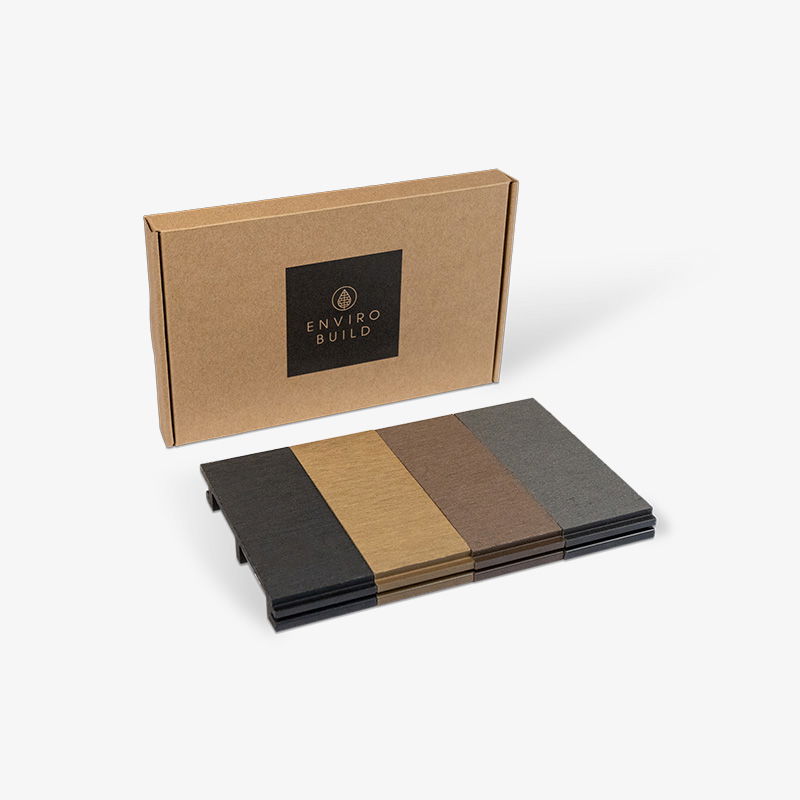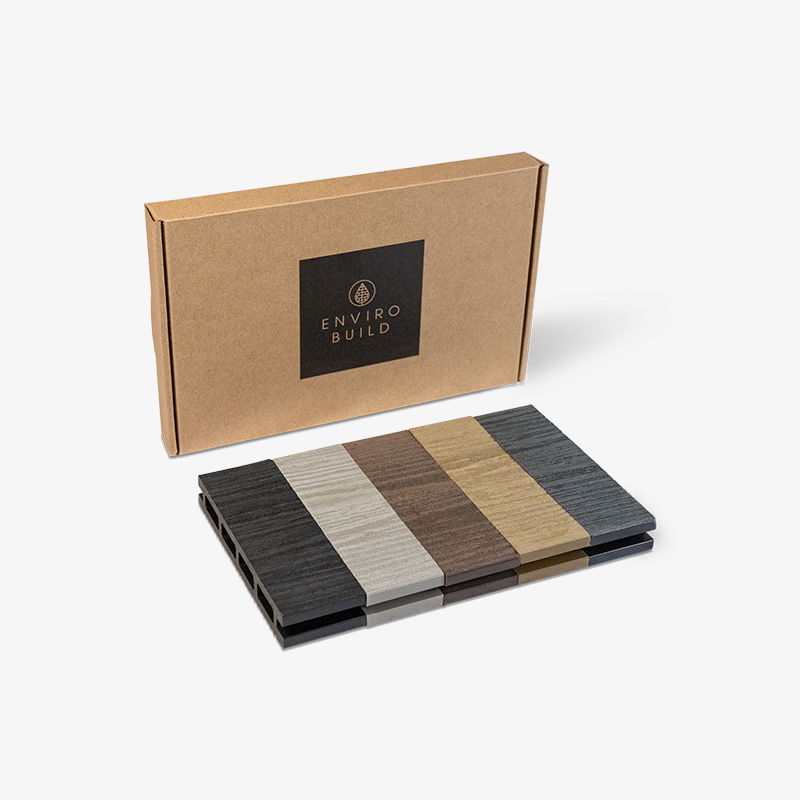Decking Subframe Installation: Step-by-Step Guide
Every great decking project starts with a solid foundation, the subframe. The substructure provides the strength, stability and drainage that determine the performance and lifespan of your deck.

Author Name
Chief Writer
Thu, 28 Jul 2026

This decking subframe installation guide walks through planning, layout and assembly to help you build a level, durable and well-ventilated base suitable for decking systems.
Why a Proper Deck Subframe Matters
The subframe is a critical and often overlooked part of any decking project. A well-built substructure ensures:
Structural stability: Prevents sagging or flexing under load.
Effective drainage: Avoids standing water and moisture build-up.
Longevity: Extends the life of the decking surface.
Safety and compliance: Ensures correct spans and load-bearing performance.
Ease of installation: Creates a flat, level surface for boards and trims.
A precisely levelled and properly spaced subframe is key to achieving a long-lasting result.
General Tips
A joist must be used under deck board ends, and a double joist structure for deck butt joints.
Plastic bearers should be installed with the greatest dimension as the upright.
The joists are designed to take live loads, any static loads must be placed over the supports. If you are concerned about the loads being placed on the structure please refer to our installation guide for support specifications.
Only use tungsten carbide tipped drill bits and saw blades when working with plastic lumber.
To allow sufficient drainage, a drainage slope of 0.5% (5mm per metre) should be incorporated.
Spacing Recommendations
Plastic lumber joist butt joints should have a minimum 20mm gap end to end.
A minimum 20mm gap is required when abutting walls or other fixed objects.
The bearer must not overhang a support by more than 50mm.
Where lumber ends abut a cross beam, you must leave a minimum 10mm gap from the bearer end to the cross beam. These can be joined using expansion L-brackets over a support or joist hangers.
Due to temperature induced expansion and contraction with plastic lumber, you should never fix bearers directly to foundations; if you have to fix the bearers to the foundations, use expansion clips.
EnviroBuild composite decking boards should not overhang joists by more than 20mm.
Reinforcing with Noggins
Larger decks can be strengthened with noggins, which contribute to the structural durability of the deck.
This involves fastening the joists to the decking posts using short pieces of lumber. The noggins will need to be installed in a straight line, perpendicular to the joists. Leave a 1mm gap between the noggin and the joist at each side. Pre-drill the joists with two 10mm holes at each end so the screw is free to move.
Offset the noggins so that you can drill straight through the joist and into the end of the noggin to ensure security and stability.
Hard Surface Decking Subframe Installation
With solid flat foundations and flat roof installations the decking substructure can be supported with adjustable support pedestals. These are simply placed straight onto the ground with a protective rubber pad (for flat roofs) and the height of each is adjusted by rotating the pedestal top.
Composite boards must be a minimum of 50mm off the ground
Preparing the area
The foundations should incorporate a drainage slope of 5mm per metre to avoid water pooling.
The installation condition should be flat and stable in order to avoid deformation of the decking surface.
A gutter or scupper should be made in the foundations.
In areas of potential excessive water and debris build up, we recommend either Manticore plastic bearers or min. 90mm off the ground for pressure-treated timber joists to ensure good air ventilation and water passage.
Roof terrace preparation
Ensure the roofing membrane is 100% watertight and free of debris.
On flat roofs, protective rubber mats should be placed under pedestals to avoid damaging the roofing membrane.
Where a waterproof membrane is in place, pedestals can not be bolted to the ground; the weight of the decking should be sufficient to keep all in place.
Laying Decking Pedestals
First, you need to lay your adjustable decking pedestals:
Step 1
Starting from the edge of the decking area, lay out the pedestals:
Rotate the base clockwise to increase the pedestal height to your required size
Your joist size will affect how often you need to lay the pedestals
In corners or along edges where the top of the pedestal cannot fully support the joist, you can simply turn the pedestal upside down
Step 2
For roof terraces it is recommended to use the rubber base matts to provide an extra layer of protection.
Step 3
If installing on a slope, use a spirit level to check the level of the pedestals.
Step 4
To take account of a slope in the foundations, joist cradles can be used that can correct for the incline.
Laying The Joists
Step 1
After laying the pedestals, starting from the edge of your sub-frame, place the bearers on top of the pedestal centres.
Step 2
Ensure that each bearer / joist is supported in a minimum of 3 places, to the maximum span as in the table. The decking range used will also determine the joist centres.
The range of decking you use will determine the joist centres used for the project. Ensure widths between joist centres are no greater than below table:
Range
Max. Support Span
Diagonal Support Span
Hyperion Pioneer
300mm
250mm
Hyperion Explorer
300mm
250mm
Hyperion Frontier
400mm
300mm
If you plan on using Manticore Plastic lumber the height dimension of the bearer will determine how often the joists need to be supported. Ensure widths between supports under joists are no greater than below:
Plastic Lumber Bearer Profile
Max. Support Span
50x50mm
500mm
50x100mm
750mm
50x150mm
1500mm
Step 3
If you have a joist butt joint, joists can be laid end to end when supported on a pedestal. Ensure to leave a 20mm expansion gap between joists ends.
Step 4
A full joist width and clip must be used under each deck board end, thus you must ensure to have a double joist structure for deck board butt joints.
Step 5
When joining joists over pedestals without installing a joist cradle, a brace should be added across joist butt joints. This is especially important when using joists beneath a larger terrace as the lumber may contract, putting pressure on the decking installed above. To secure the brace, screw a section of lumber across the joist butt joint. Holes should be oversized by 3mm to allow for expansion and contraction.
Soft Surface Decking Subframe Installation
On soft ground there are two options to support your deck: Post Supports (as described below) or ground spikes.
Post Support Method
Remove any top turf layer and screed/gravel should be laid to aid drainage; use weed control fabric to prevent plants growing below the decking.
Incorporate a drainage slope of 4mm per metre.
Composite decking must be a minimum of 300mm off the ground when over soft ground.
Foundations must be higher than surrounding areas to avoid ponding.
Step 1
After prepping your area, start from the edge of the sub frame and plant you posts into the ground:
Cement the posts into the ground a minimum of 500mm or a third of the total post height
Step 2
Once the cement has set, you can attach the joist frame:
Joists should be attached using good quality galvanised mushroom capped bolts which penetrate both the bearer and the upright post; typically with countersunk nuts where appropriate.
When using plastic lumber, bolt holes should be oversized by 3mm to allow for expansion and contraction.
Step 3
Ensure that each bearer/ joist is supported in a minimum of 3 places to the maximum span as in the table. The decking range used will also determine the joist centres.
The range of decking you use will determine the joist centres used for the project. Ensure widths between joist centres are no greater than below table:
Range
Max. Support Span
Diagonal Support Span
Hyperion Pioneer
300mm
250mm
Hyperion Explorer
300mm
250mm
Hyperion Frontier
400mm
300mm
If you plan on using Manticore Plastic lumber the height dimension of the bearer will determine how often the joists need to be supported. Ensure widths between supports under joists are no greater than below:
Plastic Lumber Bearer Profile
Max. Support Span
50x50mm
500mm
50x100mm
750mm
50x150mm
1500mm
Step 4
To strengthen the deck and reduce the amount of posts required, you can use joist hangers to hold joists to cross beams.
Step 5
When using Manticore plastic lumber, where the joist end meets a cross beam, you must leave a minimum of 10mm gap to allow for joist expansion.
Step 6
At butt joints the deck board ends should not share a single joist, each deck board end must be supported by a full joist. For deck board butt joints you must ensure to have a double joist structure underneath.
One hidden fastener should be per board end at butt joints. Butt joints should not share one clip.







